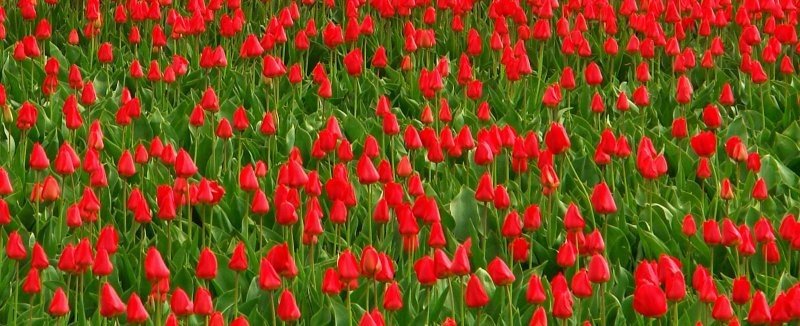|
|
Tulip Fields, Keukenhof, The Netherlands
|
Tulips are indigenous to mountainous areas with temperate climates and need a period of cool dormancy. They do best in climates with long, cool springs and early summers. Although perennials, they are often replanted annually in warmer areas of the world.
The bulbs are typically planted around late summer and fall in well-drained soils, normally from 4 inches (10 cm) to 8 inches (20 cm) deep, depending on the type planted. In parts of the world that do not have long cool springs and early summers though, the bulbs are often planted up to 12 inches (300 mm) deep. This provides some protection from the heat of summer and tends to force the plants to regenerate one large bulb each year instead of many smaller non-blooming ones. This can extend the life of the plant in warmer areas by a few years, but it does not stave off degradation in bulb size and the eventual death of the plant.
Propagation
Tulips can be propagated through offsets, seeds or micropropagation. Offsets and tissue culture methods are means of asexual propagation for producing genetic clones of the parent plant, which maintains cultivar integrity. Seed-raised plants show greater variation, and seeds are most often used to propagate species and subspecies or to create new hybrids. Many tulip species can cross-pollinate with each other, and when wild tulip populations overlap with other species or subspecies, they often hybridize and create mixed populations. Most tulip cultivars are complex hybrids and actually sterile. Those plants that do produce seeds most often have offspring dissimilar to the parents.
|
|









